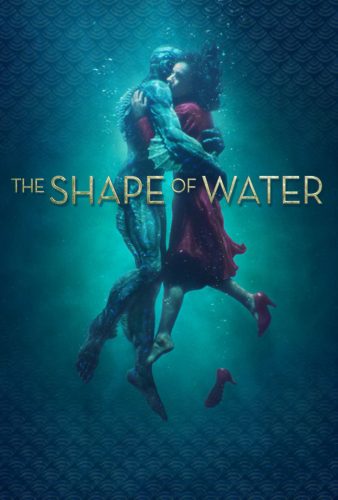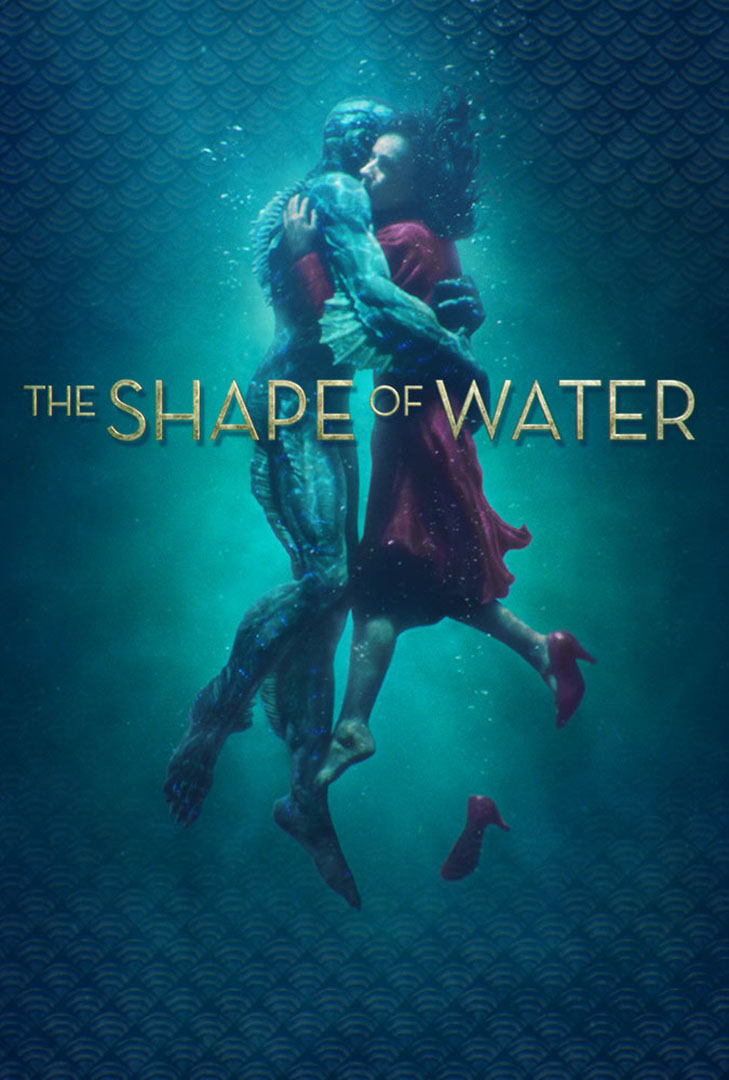![]() “The Shape of Water” features a beautiful original score but the most significant musical motif of the film is found in the past. One particular song reverberates throughout from the little seen 1943 musical, “Hello, Frisco, Hello.” The song, ‘You’ll Never Know,” which is central to “The Shape of Water,” is the sort of odd love song that’s all the more moving and alarming for hardly being happily romantic. In its original context, the Oscar-winning song is about a woman singing longingly to a man she fears will never love her or understand her love for him. It’s a despondent number, aching with a visceral sadness that’s affecting where the movie it first appeared in is not. Seven decades later, it is reused in Guillermo del Toro’s “The Shape of Water,” which on its surface seems so obviously about the triumphs and possibilities of love that it becomes almost a puzzle the way the song becomes the central love theme of the interspecies couple at its centre. And yet, I think this is key—perhaps the key to the film, which seems more straightforward than it might be.
“The Shape of Water” features a beautiful original score but the most significant musical motif of the film is found in the past. One particular song reverberates throughout from the little seen 1943 musical, “Hello, Frisco, Hello.” The song, ‘You’ll Never Know,” which is central to “The Shape of Water,” is the sort of odd love song that’s all the more moving and alarming for hardly being happily romantic. In its original context, the Oscar-winning song is about a woman singing longingly to a man she fears will never love her or understand her love for him. It’s a despondent number, aching with a visceral sadness that’s affecting where the movie it first appeared in is not. Seven decades later, it is reused in Guillermo del Toro’s “The Shape of Water,” which on its surface seems so obviously about the triumphs and possibilities of love that it becomes almost a puzzle the way the song becomes the central love theme of the interspecies couple at its centre. And yet, I think this is key—perhaps the key to the film, which seems more straightforward than it might be.
Our story takes place in Baltimore in the early sixties. The sheen of the Cold War permeates the air. Our heroine, Elisa (Sally Hawkins), is a mute janitor at a government agency whose life is one of rote beginnings and endings but who dreams of tap dancing and music. One day, an amphibious creature is rolled into the lab and her story changes. “The Shape of Water” is dominated by spectacle. Its relationship with music, sound design, cinematography, visual art, production, and more is very pronounced. Elisa’s muteness, too, suggests that words might even be incidental. Her life is anchored by two friends: At home, it is the lonely artist Giles and at work the simultaneously world-weary and ebullient Zelda. They are both talkers and at first their chatter seems peripheral, and flat even. It’s the sort of mindless chatter to fill up silence that might be read as stock characterisations. In key shots, we fade into or fade out of a scene of the two talking to Elisa, which seems to support the notion of the dialogue as marginalia. It’s an important sleight-of-hand, though, because del Toro (who wrote the script with Vanessa Taylor) is being deliberately ambiguous.
 In one of those seemingly incidental bits of dialogue, Giles recounts to Elisa a bit of trivia that marks the randomness of his knowledge. He tells of the Greek myth of Tantalus, from whom we have the word “tantalise,” the man cursed with eternal deprivation as a punishment. He was fated to stand below a tree with golden fruit and in a pool of water for life. The fruit would always be just beyond his reach and the stream would always recede just far enough so that he could never reach it. His fate was one of continuous longing. I was trying to put into words for some time after seeing “The Shape of Water” what the central feeling was that it conjured within me and, oddly, for a romance, the feeling is not absolution, or even satisfaction but a sort of incandescent longing. The first time I saw it, the feeling was discomfiting. I was moved by all I had seen, but also deeply sad. And as the Renée Fleming cover of ‘You’ll Never Know,’ a song I’ve always liked for its aching sadness, played over the film’s end credits, I wondered again: Why was del Toro returning to that unhappy song?
In one of those seemingly incidental bits of dialogue, Giles recounts to Elisa a bit of trivia that marks the randomness of his knowledge. He tells of the Greek myth of Tantalus, from whom we have the word “tantalise,” the man cursed with eternal deprivation as a punishment. He was fated to stand below a tree with golden fruit and in a pool of water for life. The fruit would always be just beyond his reach and the stream would always recede just far enough so that he could never reach it. His fate was one of continuous longing. I was trying to put into words for some time after seeing “The Shape of Water” what the central feeling was that it conjured within me and, oddly, for a romance, the feeling is not absolution, or even satisfaction but a sort of incandescent longing. The first time I saw it, the feeling was discomfiting. I was moved by all I had seen, but also deeply sad. And as the Renée Fleming cover of ‘You’ll Never Know,’ a song I’ve always liked for its aching sadness, played over the film’s end credits, I wondered again: Why was del Toro returning to that unhappy song?
“The Shape of Water” depends on its symbols and significantly on its conventions. The ‘types’ that litter the film become, for me, key to understanding its value. There is the affable, mute girl; the chatty black woman; the aging closeted artist (Giles); the tyrannical alpha male executive (Michael Shannon as Strickland); the conflicted scientist (Michael Stuhlbarg as Dr Hoffstetler) and the half man-half monster creature. These are all familiar types, painfully so, that “The Shape of Water” flirts dangerously with suggesting itself as being thinner on story than it really is. But even as del Toro anchors the films with these types, everything else in the film is just one note or one beat or one shade off of what we might think it ought to be.
“The Shape of Water” is bathed in longing, or that old word that we don’t tend to use as much anymore, wistfulness. Wistful. Adjective. Meaning, “sad and thinking about something that is impossible or in the past.” The word sums up the film vividly for me. I’ve written about the Cold War and film before, and it persists as an excellent filmic metaphor for its haziness as both a “war” and a concept. When did it really begin? Did it ever end? What defines it? Setting “The Shape of Water” in the height of that illusory war is the ideal mood creator for the film’s own own illusory and hard to define centre.
Of the self-titled Three Amigos (Mexican-American directors Alejandro González Iñárritu, Alfonso Cuarón and del Toro), del Toro has always been the most distinct as a magical realist – that genre, best typified by Latin American writers, where the commonplace is just slightly subverted by something fantastic, some fabulism, some magic. His love for the genre often threatens to upend his films for literalness and their obviousness. “The Shape of Water” seems acutely aware of that. The production is never truly surrealistic, but the film is bathed in a sort of hazy glow that communicates something, not necessarily dullness, but a soft dreamscape. This is never more effective than in the scenes in Elisa’s apartment, particularly in shots of the flat through the rain. Alexandre Desplat’s music – the film’s most proficient technical aspect, amidst many excellent ones – is the best manifestation of this. The tinkling piano and the plaintive string instruments evoke a tender feeling that is not completely sad but one that never rises to our conventional notions of happy music.
del Toro offers key scenes into the home-lives of each of our “types” and from the best of them to the worst it is longing that marks their existence. The broadness of these types, which the story depends on for its fabulism, becomes less of a liability than a way for him to hand the rein over to his actors. It’s the first del Toro film where he seems completely willing to relinquish that sort of artistic control to his actors. And for all of them, even the ones constantly talking, it’s the close-ups of their faces that are key – Elisa looking at the creature over a breakfast table, Zelda staring at a villain when cornered, and Strickland’s face staring out of a car window in the rain. Desire, white hot, permeates the film, so that when its conclusion comes, we wonder: is this real or has this all been dreamt?
The film closes with our narrator intoning, “When I think of her, of Elisa, all that comes to mind is a poem. Made of just a few truthful words… Whispered by someone in love, hundreds of years ago… ‘Unable to perceive the shape of You, I find You all around me. Your presence fills my eyes with Your love, It humbles my heart, For You are everywhere.’” I’ve been thinking about that quote, which seems to be a translation of some old Rumi poetry. If love is everywhere, why does the film’s joy seems so compromised by its gradations of sadness and despair? And then it occurs to me it is not the joy of love, but the wistfulness of hope, longing and desire that are all around. For what is love but that instinctual desire to be seen and to be valued? When Alice Fay sings ‘You’ll Never Know’ in “Frisco,” it does not matter that the love is, at the time, unrequited, though. In a way, it is the unrequitedness that makes the love more profound. It is the wistfulness of love, not the joy. That wistfulness is everywhere, in the embrace of love, and in the bloody chill of death. We are all reaching forward to fantasy or backwards to our past. Love, for del Toro is not a pure dreamscape of unending bliss but instead an uncomfortable world that seems almost willed into being from someone’s offbeat imagination. The world of this fairy tale is not a magic kingdom but a world like ours that is muddy and contaminated and incongruous that resounds with the tinkling notes from an old piano.










